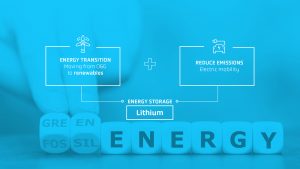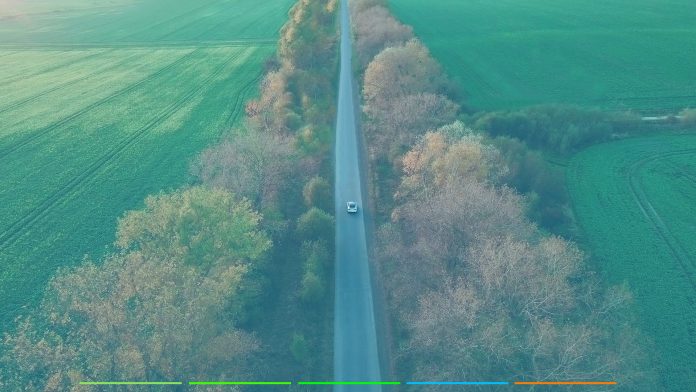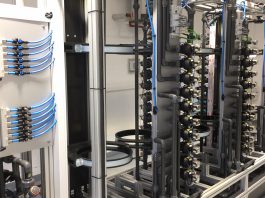Pedro Ruiz, Chief Commercial Officer of GeoLith, explains how the company is facing the industrialisation of its Li-Capt Direct Lithium Extraction technology and explores the challenges that the market needs to overcome.
It has become clear in these last years that lithium availability will turn out to be the main bottleneck for battery manufacturing, potentially jeopardising energy transition goals. When talking about the energy transition, we are inevitably discussing energy storage and green mobility, both of which rely on lithium availability and extraction to provide reliable and efficient equipment. The increase in demand for electric vehicles (EVs) has put enormous pressure on the lithium supply chain, bringing current production capacity to its limit.
The first consequence of this is great market volatility and extremely high lithium prices, with original equipment manufacturers (OEMs) off-taking as much lithium as available in the market and trying to secure long-term supply at the lowest possible price. Another important consequence is the acceleration in the development of new lithium production assets, particularly from non-conventional sources. Junior mining companies, geothermal lithium producers, and continental refiners are being announced every other week, and the financial markets are receiving these new developments with enthusiasm.
Demand for lithium from alternative sources
This enthusiasm is well supported by the lithium market. The International Energy Agency (IEA) reported that, by 2030, there will be an increase of at least five times the current demand for lithium. Existing lithium sources will not be able to meet that demand, most of them around the Atacama Desert reaching their production limits. Several studies estimate that, at the horizon of 2030, between 38% and 43% of the global lithium supply will come from non-conventional sources, like geothermal assets, oil-produced waters, as well as salars, that are far less concentrated than those in production today, making evaporation impossible.
Evaporation has a maximum efficiency of 40% (the average being around 20%). That means that between 60% and 80% of the lithium contained in the source is actually wasted as precipitates and not valorised in the market.
However, producing lithium from these non-conventional sources is not yet possible at an industrial scale, especially due to their very low concentration of lithium (between 10 and 100 times less concentrated than currently productive South American salars). Evaporating is neither a technical nor an economically viable option. Several Direct Lithium Extraction (DLE) technologies have emerged in the last few years, such as Li-Capt® developed by GeoLith. These proposed technologies act as an alternative to evaporation, with recovery rates that reach up to 97% of lithium. This huge increase in efficiency makes it realistic to produce lithium from non-concentrated reservoirs, like the ones mentioned previously.
Direct Lithium Extraction
All Direct Lithium Extraction technologies operate similarly: the fluid containing lithium is circulated through an active material (membranes, beads, solvent, or other kinds) that selectively absorbs the lithium out of the liquid. The rest of the original fluid, unaltered, is recovered at the output of the equipment, and can then be valorised or reinjected in the original reservoir, avoiding depletion.
In the second step, the lithium captured previously is released from the active material, usually in the form of a lithium concentrate (either chloride or sulphate). In the case of GeoLith, its technology is based on an ion exchange process, that takes place thanks to its patented Li-Capt material. This material has a proven high selectivity of lithium (capacity to only absorb lithium) and great reversibility (capacity to release all the lithium previously captured).
This presents several undeniable advantages. First, in terms of efficiency, Li-Capt has proven recovery rates beyond 97% in brines from different assets and natures, compared with the maximum of 40% of current methods, which apply to a handful of assets. Moreover, the current production process needs an average of 18 months, while Li-Cap takes several hours. The potential to increase production is undeniable: multiply the productive assets and produce faster and more efficiently.
If the market pressure and technological advantages are already perfectly good reasons to apply these technologies, we must still consider another and arguably more important reason for seeing them succeed: their reduced ecological impact.
Li-Capt technology produces no CO2 emissions, and its active material is recycled by GeoLith at the end of its life, not leaving any waste behind. This is particularly relevant when compared to the other current major source of lithium, hard rock mining, which is estimated to emit around 15 tons of CO2 per ton of lithium carbonate equivalent (LCE) produced. When doing the maths of the expected lithium production in 2030 (around two million tons of LCE), the number of emissions avoided by these technologies will be huge (in the order of millions of tons every year). Even compared with the less emissive production from the salars (around five tons of CO2 per ton of LCE), the reduction is still very important.
Moreover, Li-Capt technology does not require any evaporation, avoiding the depletion of natural resources, and therefore avoiding desertification. Even better, it can take advantage of the flow of geothermal sites and oil wells to capture lithium from them with a very limited energy footprint. Li-Capt technology can have a negative carbon footprint when renewable energy technologies generated by geothermal assets are used.
Direct Lithium Extraction technologies, such as the one proposed by GeoLith, will be the cornerstone to producing local and sustainable lithium, which will not only ensure the availability of energy storage systems, but also sovereign control over the resources in Europe and North America.
Technology industrialisation
With that many advantages, it seems foolish not to have those technologies industrially available yet. But technology development is a complex and tricky matter. All technology developers need to go through the different stages of development, from the idea to the laboratory testing, the proof of concept, and the scale-up of the materials, processes, and methods to reach the full industrial size. It is a long and time-consuming process, and lithium has become quite recently a matter of global interest.
GeoLith has been walking the industrialisation road since 2019, when its first laboratory bench was manufactured, proving the efficiency of the technology in a wide range of concentrations, pressures, and temperatures. It has since manufactured three pilot plants with increased capacities, that are currently operating in different parts of the globe. Its mobile geothermal pilot, based in the east of France, has performed tests in several European countries, at customers’ sites, showing the potential for lithium extraction in continental brines.
Thanks to the success of these tests, a pilot plant with an equivalent treatment capacity of ten-ton LCE/year was designed and manufactured for Cornish Lithium and commissioned in 2022. The latest pilot plant, with a capacity of five tons of LCE/year, has been installed at the University of Antofagasta, in Chile, as part of a partnership between the French Government and the public Chilean university. This pilot is validating the technology at a pre-industrial level in the South American salars. These pilots and experiences are paving the road for the full industrialisation of Li-Capt technology by 2024.
But what does exactly ‘industrialise the technology’ mean?
First of all, it means having consistent performances under industrial operating conditions. For starters, being able to treat massive volumes of lithium-rich fluids, to have economically viable production facilities. It also means to operate under the conditions imposed by the operators, in terms of variability, control and command, exposure to salinity, corrosion, and any other external agent. It means refining and adapting the operation and maintenance constraints, so it is tailored to the operators’ needs. GeoLith has taken this challenge very seriously, proposing a modular design that mimics some of the other very well-known technologies by our customers. That simplifies the installation, operation, and maintenance, and helps to better understand the process to make the technology compatible with the industrial operation.

Industrialising also means being able to supply massive amounts of technology to its customers, with consistent levels of performance and quality. To that end, GeoLith has worked on two fronts, resulting in a clear industrialisation roadmap from here to 2024: securing the prime materials and ensuring manufacturing capabilities.
The first has been done by signing a very comprehensive agreement with a renowned worldwide chemical manufacturing leader, that exclusively manufactures GeoLith’s patented active material at an industrial scale, ensuring no possible shortages. For the latter, GeoLith is planning to build its own manufacturing facilities, that will have the capacity to supply Li-Capt equipment to project developers up to 2027, equivalent to several tens of thousands of LCE production per year.
Next frontiers for lithium extraction
However, maturing technologies and bringing them to industrial capacities is not a task that can be undertaken by the technology developers alone. Close collaboration is needed with the lithium extraction asset developers. Developing a lithium extraction project, as well as developing technology, is a complex process and takes time in permitting, financing, and technical and economic studies. Developing the technology helps overcome the different project development stages, securing its feasibility, and having solid and committed project partners to help develop the technology under real operating conditions. The synergies are undeniable and necessary to grow at the same speed and be ready to produce lithium at the same time.
GeoLith is currently working with a great number of asset and project developers, testing their brines thanks to our pilot plants. The promising results that GeoLith is obtaining are validating the scalability of the solution and securing the target of a technically and commercially mature technology from here to 2024.
This does not mean that, until that date, Li-Capt will not be available for customers to build their lithium extraction assets: GeoLith has put in place a progressive manufacturing plan that ensures that, from early 2023, it will be able to serve the market with industrial quality, and size Li-Capt. So, if you are developing a project and are looking for an extraction technology, it is likely that the timescales will align.
The collaboration between project developers and technology providers is not enough. Important amounts of funding are needed, both on the project and technology sides. The size of these projects, given the size and the location of the original sources, are, in the best of cases, multi-million-dollar projects. Most probably, the average project CapEx will turn around hundreds of millions of dollars.
The revenues associated with the projects, even at the most conservative lithium prices of 30 to 35 $/Kg of LCE (the current price of 80$/kg LCE), provide great financial returns, with very early breakeven and great profitability in the long term (a lot of project finance plans are openly published online, both from geothermal sources and salars).
This has been fuelled, among other reasons, by the recent offtake agreement of several OEMs from future lithium producers, as well as some well-known car manufacturers ensuring that producing and refining lithium could be like ‘printing money.’ Developing a market this size (over a hundred billion dollars in the short term), and with a project of this CapEx, is not a task just for junior mining companies. Big oil and gas or mining companies are perfectly suited to absorb the associated costs and risks, and very well used to managing the revenues while developing a market that still needs maturing itself.
Lithium production is also a perfect fit for these companies beyond a financial and market perspective. The similarities with their core business go well beyond that: they already have lithium-rich assets around the world. The oil-produced waters are already treated by oil and gas companies, and therefore, GeoLith’s Li-Cap technology opens the possibility of turning a cost into a sizeable revenue stream.
Moreover, most of the technical challenges that the lithium industry is confronting (soil and reservoir management, drilling, geological exploration, wells management, water management, chemical engineering, etc.) have already been solved by the oil industry years ago. They have highly skilled and specialised professionals in those areas, whose expertise will be of great value to this nascent lithium industry.
If that was not enough, the business model will also resonate with their core business model: upstream and downstream (lithium production and lithium refining to different grades and applications). As not all crude producers have refining capacities, not all lithium producers will have their own refining facilities. Depending on the production needs and on each company’s model, lithium producers could go all the way down to battery-grade lithium (production and refining), or commercialise the lithium concentrate as a result of applying Direct Lithium extraction technology (as some do with crude oil). This lithium concentrate will then be sent to a central refinery that will use feedstock from several DLEs in a particular region.
Similarly, refiners will not need to be involved in the extraction process, as they could be off-taking an intermediary product and refining it to the specific needs of their final LCE/LiOH off-takers. This pattern is emerging in Europe, with several refining projects currently being developed (for example, Viridian Lithium, Green Lithium, and Tees Valley). This parallelism with the oil industry has a major upside: lithium extraction with Li-Capt is fully environmentally friendly.
GeoLith has tested its Li-Capt technology in several brines from oil production, and the results are really promising, with lithium extraction rates well over 90%.
Local and sustainable lithium at industrial scale
With three pilot plants in operation and two in development, GeoLith is on the verge of full industrialisation. By the end of 2024, it will have its own manufacturing facilities that will produce enough Li-Capt technology to be industrially installed in the lithium producer’s assets. For that reason, GeoLith is currently undergoing a fundraising process, that will help to achieve full industrial capabilities in 2024, at the same time that the first projects will be ready.
The first industrial production of sustainable and local lithium is near, and GeoLith with its Li-Capt technology is proud to be an important stakeholder in making it possible in a cost-effective and industry-oriented way.
Please note, this article will also appear in the twelfth edition of our quarterly publication.








